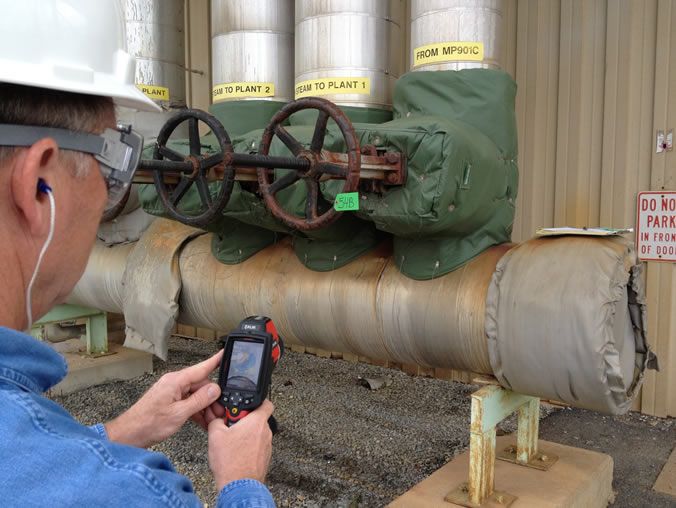Energy surveys are a path toward addressing uninsulated components that can radiate heat energy, waste resources and reduce overall efficiency of a system. Insulating these exposed pieces helps preserve that energy, maximizing retention of heat to achieve peak efficiency.
When considering a Shannon reusable-removable insulation blanket, the first step is to conduct an energy survey. Energy surveys work to find places where properly tested and designed insulation would prevent energy loss. Shannon uses ASTM standards for its calculation methodologies and measuring blanket performance.
“The reason we see energy surveys as the best first step is it allows us to go into the customer’s facility and identify the opportunities where he or she can save energy,” said Chris Williams, Southeast territory manager for Shannon.
To conduct an energy survey, a Shannon representative comes to the facility and inspects various sections of the steam system. Using infrared and thermographic imaging technology, the energy survey can both identify points where energy escapes but also find areas where the equipment functions improperly. Measurements of these components are also taken, to ensure Shannon can design the blanket to fit perfectly.
From all of this data, Shannon’s calculations give the client insight into how much energy escapes through uninsulated components. Designers then pair that with data to create a plan for how reusable, properly designed insulation blankets will help.
“It allows us to generate a survey report, which gives customers the amount of energy they’re currently losing because of uninsulated components within the system, the amount of energy they’ll save once insulated, and the cost of the product and installation,” said Williams. “From that, we give them the return on their investment, and the number of months it will take to pay for itself.”
Key to the energy survey services is delivering the message in the language of those who make the decision on projects, demonstrating financial benefits as well as energy savings.
“We’re not going in, selling them and telling them they need to do this,” said Williams. “We’re presenting the evidence and letting them make the decision based on that evidence.”

